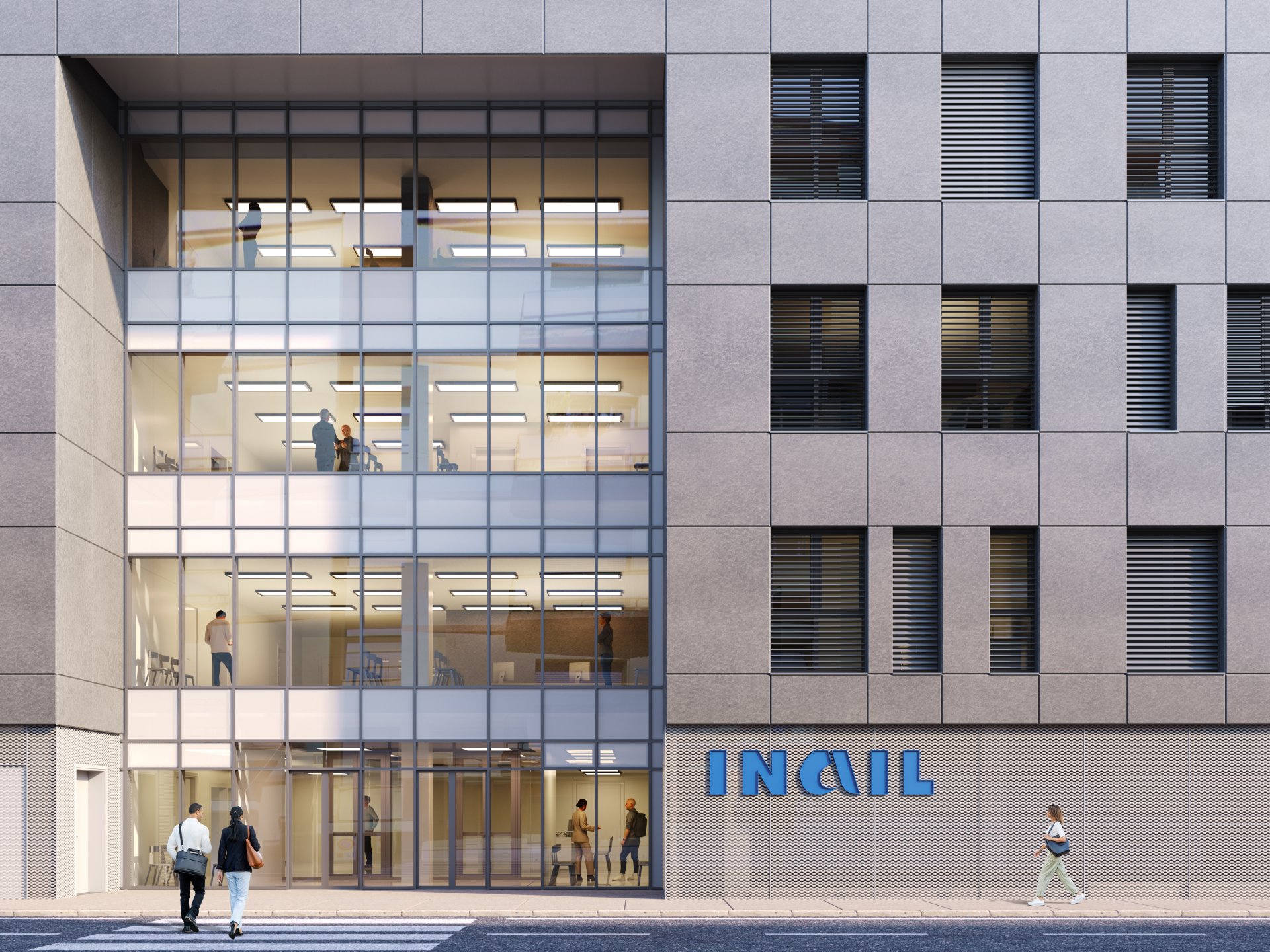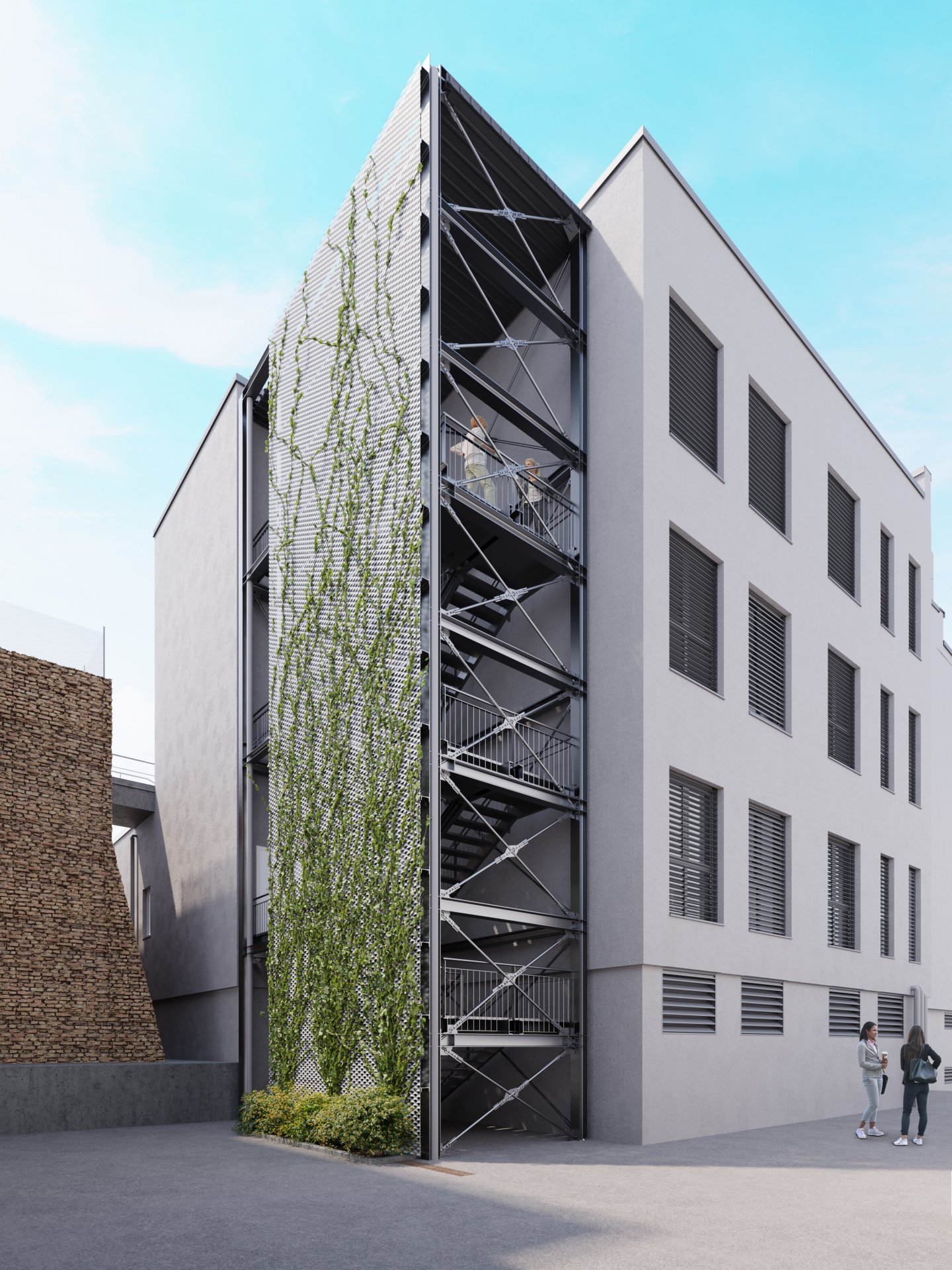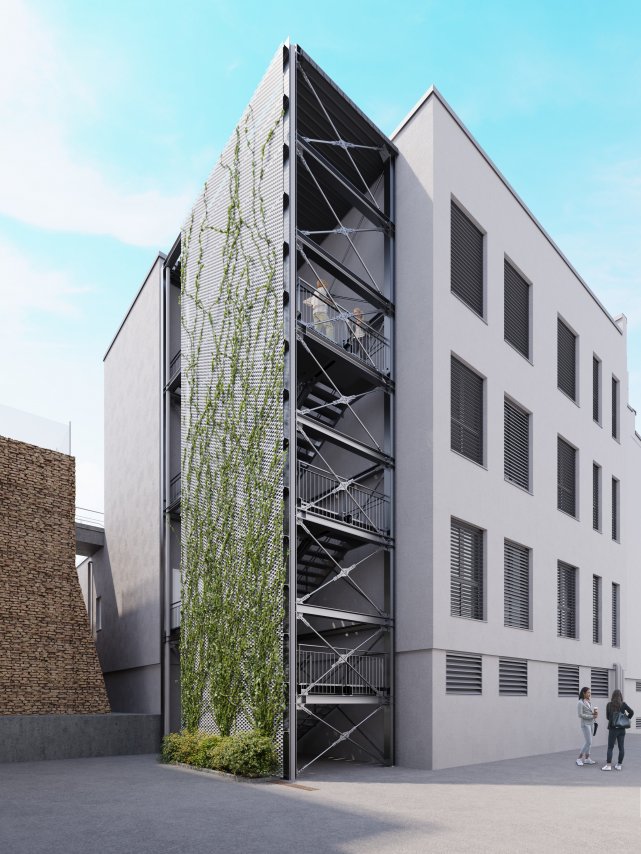Works
INAIL Ancona Headquarters
INAIL Ancona Headquarters
Services and sustainability for the new Inail headquarters in Ancona
- Location
- Ancona, Italy
- Typology
- Office
- Year
- 2021 - 2024
- Status
- Design completed
- Dimensions
- 6.600 sqm
- Client
- INAIL - Istituto nazionale Assicurazione Infortuni sul Lavoro
- Activities
- AR – ST – MEP design
Description
The new Inail headquarters in Ancona is result of a virtuous process of technical and economic evaluation on the opportunity for a radical renovation of the complex. Demolition and reconstruction are thus a viaticum for an architecture that reaches towards new horizons of sustainability, in which full functionality is the foundation for a rich offer of services for the citizens.
The intervention concerns the former IPSIA high school in via Curtatone, replaced by the new building hosting the Inail headquarters. Large volumes become the urban edge, a connotative element of the perceived space, thanks to the stone cladding and the rhythmic cadence of the openings. The regularity of the voids and the color choices lead back to the public function of the institute. The large transparent access interrupts the regularity of the elevation and declines it according to new proportions and symmetries.
The functions distributed over the four levels above ground are of a wide variety and include spaces for hydrotherapy, health and rehabilitation activities, as well as offices of the Territorial Directorate of Ancona on the second floor and offices of the Marche Regional Directorate on the third.
The project, developed entirely in BIM, meets the performance and time-schedule requirements of construction thanks to prefabricated solutions in prestressed reinforced concrete. The technological component ensures high efficiency and reduces environmental impact, already mitigated also in terms of the hydrological permeability of the area, which will bring significant benefits with the intervention. In fact, the internal car parks and green roofs contribute to this goal which prefigures a renewed and strengthened resilience of the context as a whole with respect to the changing climatic conditions.





